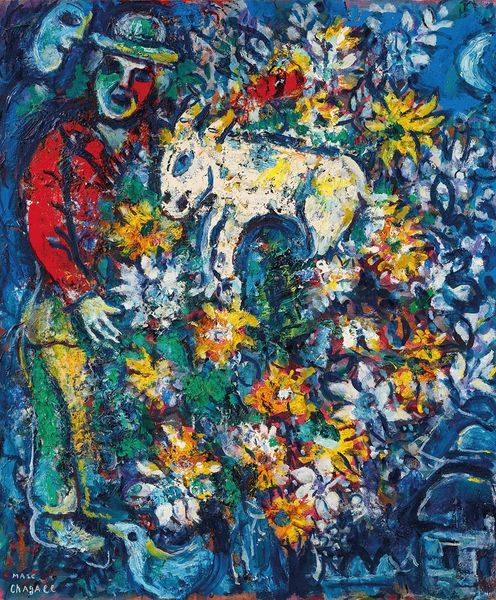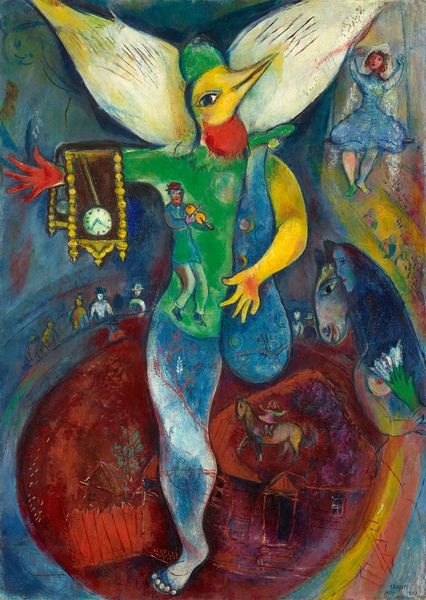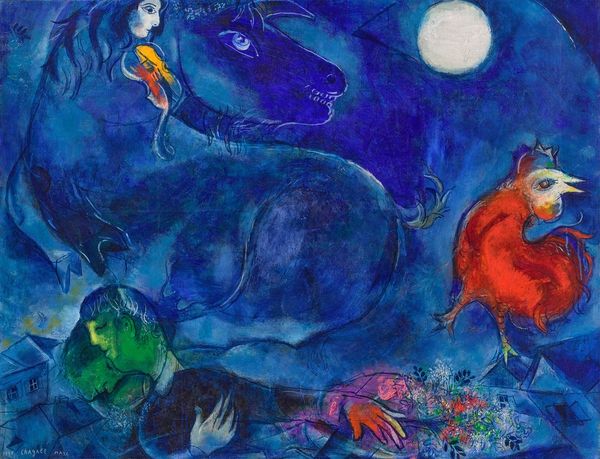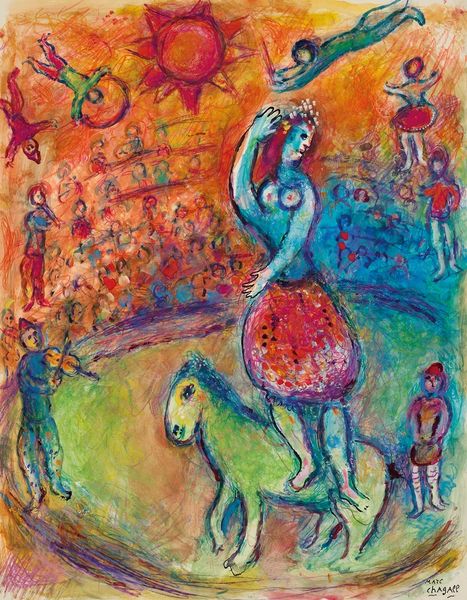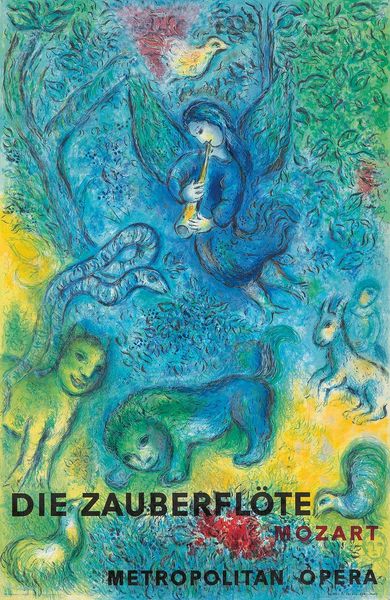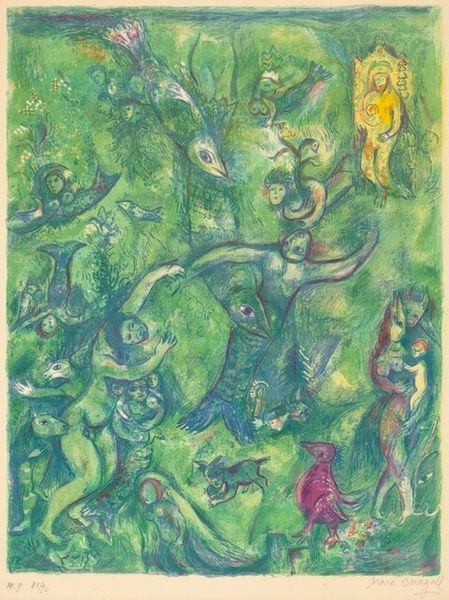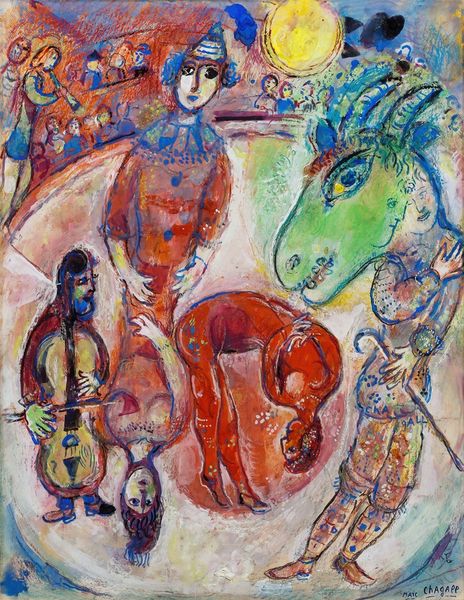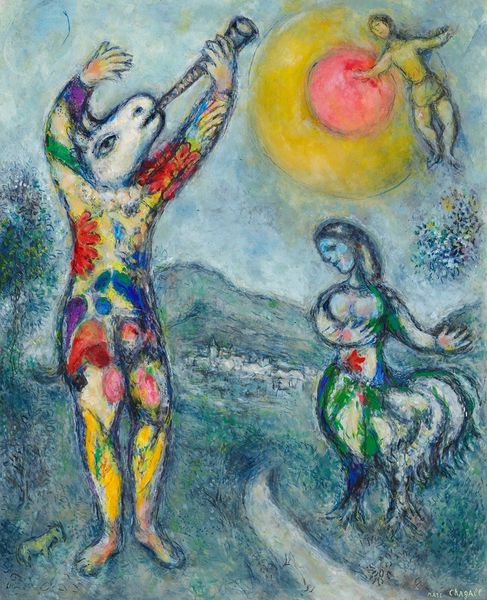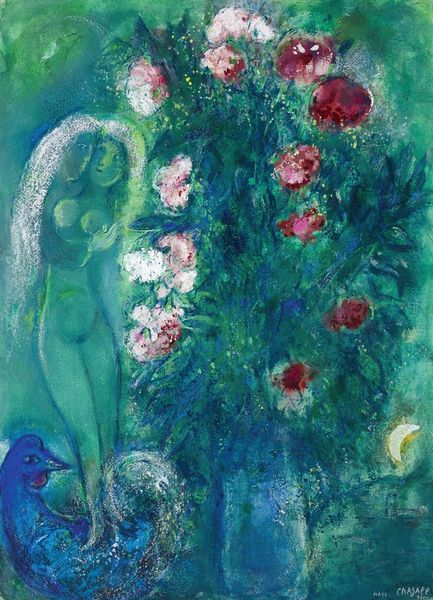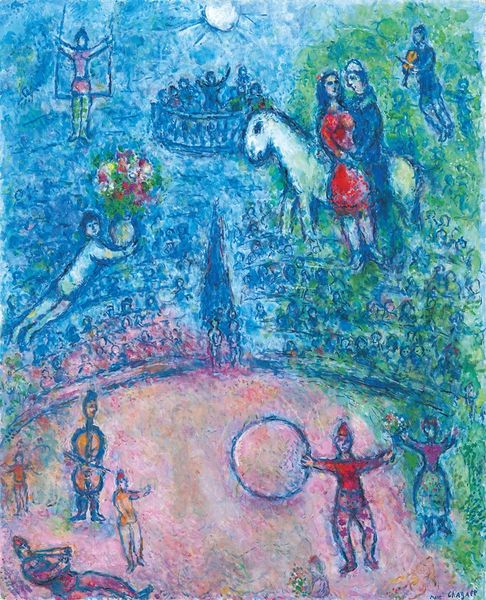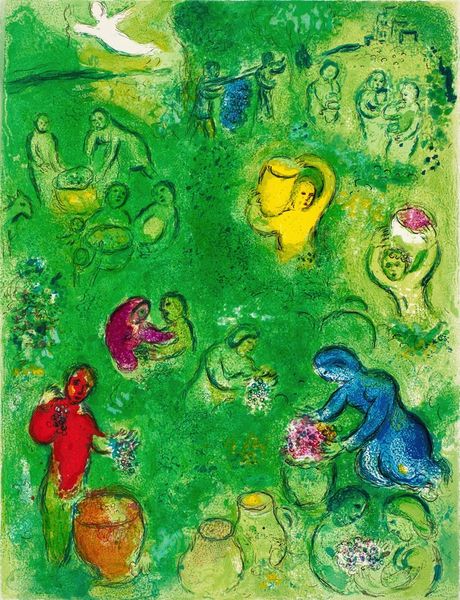
Copyright: Modern Artists: Artvee
Curator: What a dreamlike scene! The prevalent use of green and blue gives a cool, tranquil feel to this composition. Editor: It certainly does have an otherworldly quality. We’re looking at Marc Chagall’s "Le cheval à la lune," painted in 1943. It’s oil on canvas, characteristic of Chagall’s blend of Expressionism and Surrealism. Curator: The horse is so dominant. Symbolically, horses often represent power and freedom, but here, it feels almost melancholic, gazing passively as if caught in this painted reality. The violinist floating nearby only amplifies that sentiment. Editor: Yes, and consider the material realities – oil paints were difficult to obtain during wartime. What did it mean to prioritize accessing those resources to create this particular vision in 1943? The texture is built up in places, implying a dedicated investment of effort and materials to generate this symbolic space. Curator: The floating figure playing a string instrument harkens back to traditional Jewish folklore of wandering musicians. Perhaps Chagall used the recurring character as an anchor in a disorienting world, giving rhythm and harmony during uncertainty. Editor: That connection to folklore grounds the work within a specific cultural context, and thinking about the means to make it allows a greater appreciation of not only the intention, but what resources where prioritized. Oil paint allowed these colours and depth. Curator: It’s also intriguing how Chagall places the woman with the child so close to the horse’s body. The connection between humanity and nature feels so central here, this return to the primitive. It lends such a potent narrative about hope. Editor: By reflecting on both the practical production of this canvas, alongside the historical conditions in which the piece was realized, it adds to that potent narrative you mention; ultimately demonstrating the artist's world during the canvas production. Curator: Thinking about those aspects adds further resonance to Chagall’s whimsical imagery, doesn't it? It’s a layered approach I appreciate, reflecting on symbol, production and context. Editor: Absolutely. Together it opens a dialogue with art, that continues long after the piece left the artist’s hands.
Comments
No comments
Be the first to comment and join the conversation on the ultimate creative platform.
